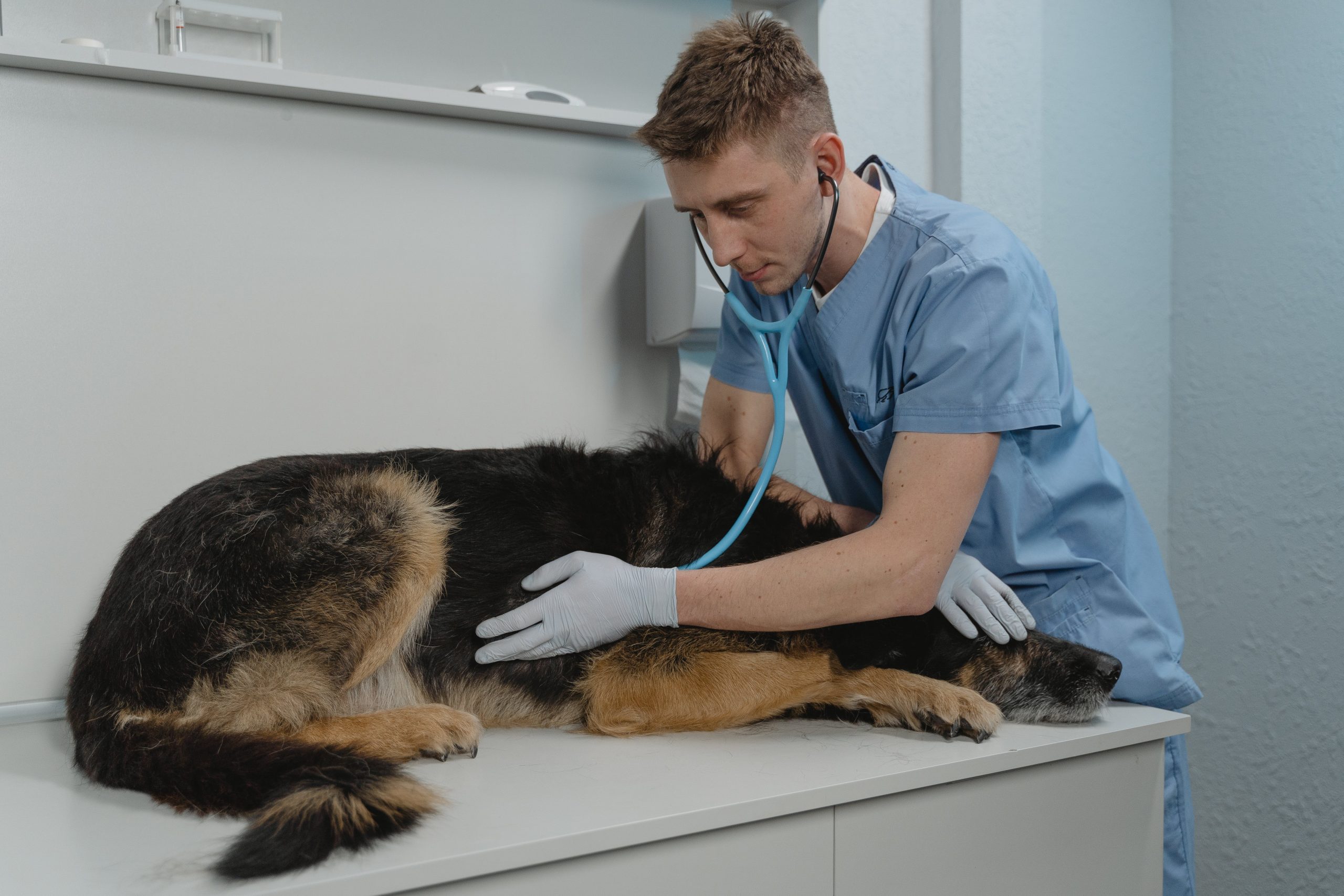When it comes to our furry friends, their health and well-being are a top priority. One common concern among pet owners is how to tell if their dog has a fever. While a thermometer is the most accurate method, there are other signs and symptoms that can indicate a fever in dogs, even without a thermometer.
A dog’s normal temperature range is between 99.5 and 102.5 degrees Fahrenheit. If their temperature rises above this range, it could be an indication of a fever. But how can you tell without a thermometer?
How to Take Your Dog’s Temperature
Accurately assessing a dog’s temperature can be crucial in determining their health status. While using a rectal or ear thermometer is the most reliable method, there are ways to detect a fever without a thermometer. Here are some techniques to help you assess your dog’s body temperature:
Method 1: Rectal Thermometer
Using a pet-specific digital thermometer, lubricate the tip with petroleum jelly or baby oil. Gently insert the thermometer about an inch into the dog’s anus. Leave it in place for a minute or until the thermometer beeps, indicating it has recorded the temperature. Remember to clean the thermometer thoroughly after each use.
Method 2: Ear Thermometer
An ear thermometer measures the infrared heat waves emitted from the eardrum. It is less invasive and can be a good alternative to rectal thermometers. Follow the instructions provided with the thermometer to correctly position it in your dog’s ear. Wait for the thermometer to beep, indicating it has recorded the temperature.
Method 3: Touch and Observation
While not as accurate as using a thermometer, you can detect signs of fever through touch and observation. Feel your dog’s ears, paws, armpits, and groin area. If they feel warmer than usual, it may indicate a fever. Additionally, observe your dog for signs such as lethargy, lack of appetite, and changes in behavior or energy levels. These can also be indicators of a fever.
Remember, it’s essential to consult a veterinarian for an accurate diagnosis and proper treatment if you suspect your dog has a fever. They can provide guidance and prescribe necessary medications if needed. Regular monitoring of your dog’s temperature and overall health can help ensure their well-being.
| Methods | Pros | Cons |
|---|---|---|
| Rectal Thermometer |
|
|
| Ear Thermometer |
|
|
| Touch and Observation |
|
|

When to Bring Your Dog to the Vet
A dog is considered to have a fever when their temperature reaches 103 degrees or higher. It is important to monitor your dog for signs indicating fever, as this can be an indication of underlying health issues. If you notice any of the following signs, it is recommended to bring your dog to the vet for further evaluation:
- Lethargy or lack of energy
- Loss of appetite
- Shivering or trembling
- Increased thirst
- Changes in behavior
These signs, along with an elevated temperature, can indicate that your dog is unwell and requires medical attention. It is always better to err on the side of caution when it comes to your pet’s health.
During a visit to the vet, they will conduct a physical examination of your dog and may order additional laboratory tests to determine the cause of the fever. In some cases, the underlying cause may not be immediately apparent, and further testing may be necessary.
| Signs Indicating Dog’s Fever | Detecting Canine Fever Without a Thermometer |
|---|---|
| Lethargy | Observation of changes in behavior and energy levels |
| Loss of appetite | Monitoring changes in eating habits |
| Shivering or trembling | Noticing physical signs such as shaking or trembling |
| Increased thirst | Observing changes in water consumption |
| Changes in behavior | Noticing any unusual or abnormal behavior |
If you are unsure whether your dog’s symptoms warrant a visit to the vet, it is always best to consult with a professional. They can provide guidance and advice based on your dog’s specific situation, ensuring their well-being and proper treatment.

How to Reduce a Dog’s Fever
When your dog has a fever, it is important to take steps to help reduce their body temperature and provide relief. Here are some effective techniques to reduce a dog’s fever:
- Cool water application: Soaking a towel or cloth in cool water and gently applying it to your dog’s paws and ears can help bring down their body temperature. The cool water helps to dissipate heat and provides a soothing effect.
- Encourage hydration: It is important to keep your dog hydrated when they have a fever. Make sure they have access to fresh water at all times and encourage them to drink. Proper hydration can help regulate body temperature.
- Avoid human medication: While it may be tempting to give your dog over-the-counter medication to reduce their fever, it is crucial to avoid this. Human medications can be toxic to dogs and may worsen their condition. Only give medication prescribed by a veterinarian.
It is essential to monitor your dog closely while using these techniques and seek veterinary care if the fever persists or if other symptoms worsen. Your veterinarian can provide appropriate medical treatment and determine the underlying cause of the fever.
| Technique | Effectiveness |
|---|---|
| Cool water application | Effective in reducing body temperature and providing relief |
| Hydration | Important for regulating body temperature |
| Avoiding human medication | Vital to prevent potential toxicity and worsening of the condition |
Remember, fever in dogs is a symptom of an underlying issue, and reducing the fever alone may not solve the problem. Veterinary care is essential to determine the root cause and provide appropriate treatment. By following these techniques and consulting with a veterinarian, you can help alleviate your dog’s fever and ensure their well-being.
Using Touch to Determine Fever
When it comes to determining if a dog has a fever, a simple touch can provide valuable clues. By feeling certain areas of a dog’s body, such as their ears, paws, armpits, and groin area, you may notice that these areas feel warmer than usual when a dog has a fever. The increased temperature in these areas can be a sign of an elevated body temperature.
In addition to feeling these areas, you can also assess a dog’s temperature by touching their nose and gums. A hot and dry nose may indicate a fever, and warm and sticky gums can also be a sign of an elevated body temperature. Please be aware that these methods provide general indications of fever, but they are not as accurate as using a thermometer.
“By feeling certain areas of a dog’s body, such as their ears, paws, armpits, and groin area, you may notice that these areas feel warmer than usual when a dog has a fever.”
Other signs to look out for include changes in energy levels, such as increased lethargy or decreased activity, as well as shivering or trembling. A lack of appetite can also be a symptom of fever in dogs. If you notice any of these signs along with the warm areas and changes in the nose and gums, it’s recommended to consult a veterinarian for a proper diagnosis and treatment.
Summary:
To determine if a dog has a fever without a thermometer, you can use touch to feel for warmer areas on their body, such as the ears, paws, armpits, and groin area. Additionally, assess their nose and gums for any changes in temperature. However, these methods provide general indications and are not as accurate as using a thermometer. If you suspect that your dog has a fever, it’s best to consult a veterinarian for a proper evaluation and treatment.

Remember that while these signs can point to the presence of a fever, they are not definitive proof. It’s important to monitor your dog closely and seek veterinary care if you suspect they may have a fever or if other symptoms persist.
Fever as a Normal Immune Response
Fevers in dogs are a natural immune response and serve as an indication that their body is fighting off an infection or undergoing repairs. Just like in humans, fevers are a normal defense mechanism that helps combat harmful invaders. When a dog’s immune system detects a threat, such as a bacterial or viral infection, it triggers an increase in body temperature to create an inhospitable environment for the pathogens.
This rise in body temperature activates the dog’s immune response, stimulating the production of white blood cells and antibodies to fight off the infection. The increased body heat also speeds up the metabolic rate, which can support the repair of damaged tissues. In most cases, fevers in dogs are nothing to worry about and will resolve on their own as the body successfully fights off the underlying cause.
However, it is important to note that not all fevers are benign. In some cases, a fever can be a sign of a more serious underlying condition that requires veterinary attention. If a dog’s fever persists for more than 24 hours or is accompanied by abnormal symptoms such as severe lethargy, difficulty breathing, or seizures, it is crucial to seek immediate veterinary care. A veterinarian can perform a thorough examination and run diagnostic tests to determine the cause of the fever and provide appropriate treatment.
| Reasons for Fever in Dogs | Typical Symptoms |
|---|---|
| Infections (bacterial, viral, fungal) | Loss of appetite, lethargy, coughing, vomiting |
| Inflammation (due to injury or autoimmune diseases) | Swelling, pain, redness, increased heart rate |
| Ingestion of poisonous materials | Nausea, vomiting, diarrhea, weakness |
| Reaction to vaccinations | Mild fever, fatigue, decreased appetite |
It is essential for pet owners to monitor their dog’s health closely and be aware of any changes in behavior or symptoms. Regular wellness check-ups and keeping vaccinations up to date can also help prevent certain infections that may lead to fever. By understanding the nature of fevers in dogs and recognizing when veterinary care is necessary, pet owners can ensure the well-being and prompt recovery of their furry companions.

Wrapping Up
To summarize, determining if a dog has a fever without a thermometer is possible by utilizing various methods of observation and touch. By carefully assessing signs such as warm ears, warm dry nose, lethargy, lack of appetite, and changes in behavior, pet owners can gain valuable insights into their dog’s health.
Regular monitoring of a dog’s temperature and overall well-being is crucial. If a dog’s temperature is elevated or if other concerning symptoms persist, it is important to seek veterinary care. A professional veterinarian can provide a thorough examination and determine the underlying cause of the fever.
Remember, fever is a normal immune response in dogs and often indicates their body is fighting off an infection or undergoing repairs. While most fevers resolve on their own, it is essential to prioritize the well-being of our furry friends by providing the necessary care and attention they need.
FAQ
How can I tell if my dog has a fever without a thermometer?
You can look for signs such as red eyes, lethargy, warm ears, warm dry nose, shivering, loss of appetite, coughing, and vomiting.
How do I take my dog’s temperature without a thermometer?
Accurate temperature assessment requires a rectal or ear thermometer. Use a pet-specific digital thermometer, lubricated for rectal measurements, or an ear thermometer that measures infrared heat waves.
What temperature is considered a fever in dogs?
A dog is considered to have a fever when their temperature reaches 103 degrees Fahrenheit or higher.
When should I bring my dog to the vet for a fever?
It is important to bring your dog to the vet if their temperature is elevated. The vet will conduct a physical exam and may order laboratory tests to determine the underlying cause of the fever.
How can I reduce my dog’s fever?
Apply cool water around your dog’s paws and ears using a soaked towel or cloth. Monitor the temperature and stop applying water when it drops below 103 degrees Fahrenheit. Encourage your dog to drink water, but never give them human medication without veterinary prescription.
How can I determine if my dog has a fever through touch?
By touching your dog’s ears, paws, armpits, and groin area, you may feel warmth, which can indicate a fever. You can also feel the dog’s nose and gums for clues, as a hot and dry nose or warm and sticky gums can indicate a fever.
What are the signs of fever in dogs based on their appearance and behavior?
Signs such as heat radiating from the body, heavy panting, increased thirst, reluctance to exercise, withdrawal from other dogs, and changes in coat appearance can indicate a fever. Shivering or trembling, as well as a lack of grooming, may also be signs of fever in dogs.
Why do dogs get fevers?
Fever is a normal immune response in dogs and indicates that their body is fighting off an infection or undergoing repairs. It can be caused by infections, inflammations, ingestion of poisonous materials, and even vaccinations.






